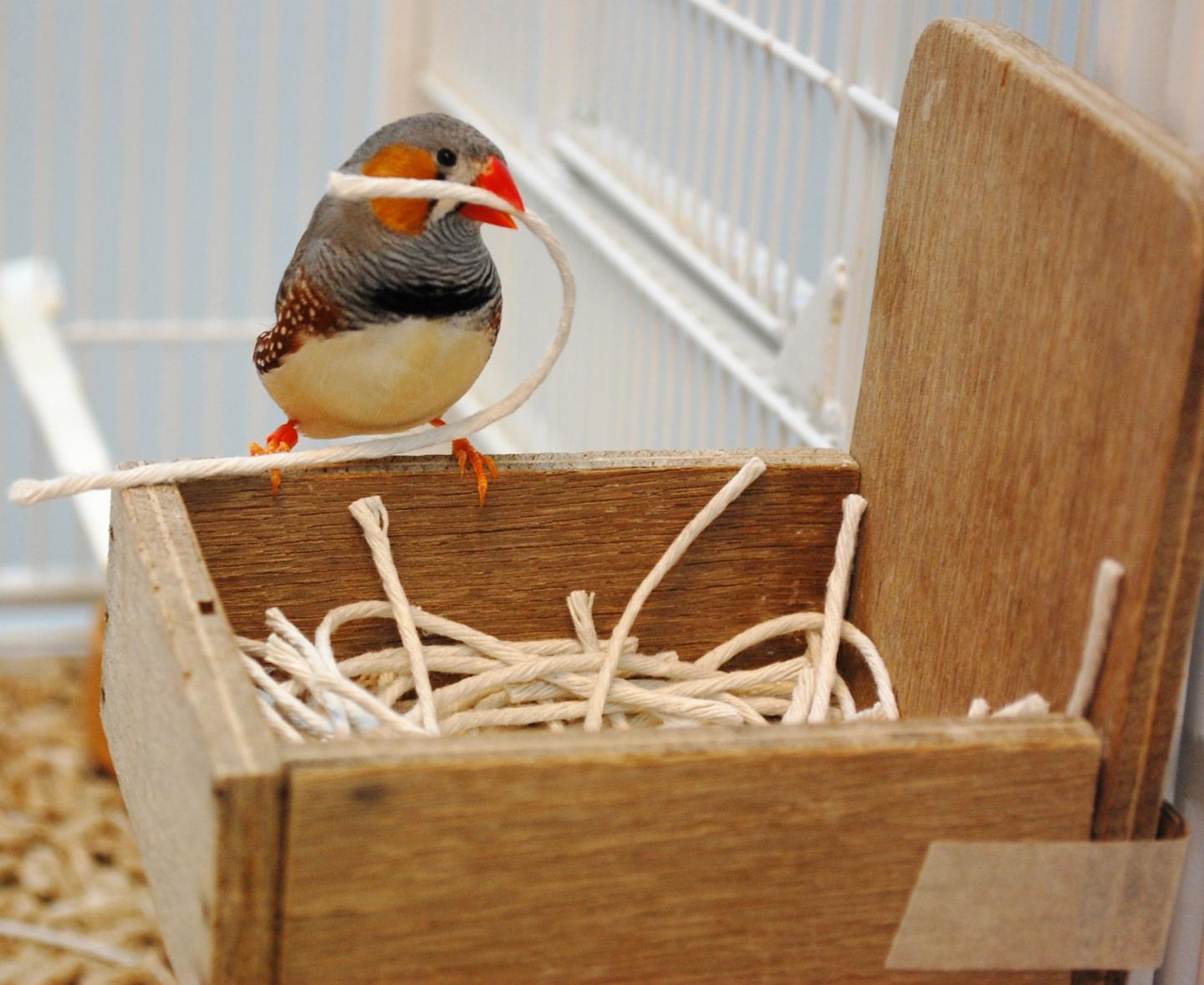Materials used and speed of nest construction depend on who and what was around during adolescence for zebra finches

Credit: Alexis Breen.
Early life experiences of zebra finches have a big effect on the construction of their first homes, according to a new study by researchers at the University of Alberta’s Faculty of Science and the University of St Andrews’ School of Biology.
The study shows that the presence of an adult bird as well as the types of materials available in early adolescence influence two key aspects of first-time nest building: material preference and construction speed.
“Interestingly, we noted that the preference for different materials, differentiated by colour in our study, is shaped by the juvenile experience of this material–but only in the presence of an adult,” said Lauren Guillette, assistant professor in the Department of Psychology and project lead.
“This work is important because it debunks the long-held myth that birds build nests that look like the nest in which they hatched–making nest-building a useful model system to experimentally test how animals learn about physical properties of the world.”
In this study, the researchers controlled the environment in which zebra finches grew up. Each bird hatched into a nest of a specific colour–pink or orange. As the birds grew up, they were paired with another bird of the same age. Then, some pairs were grouped with an adult bird in an environment that contained a different colour of nest material than the colour in which they hatched. Other young pairs of birds experienced only an adult as company, or only nest material and no adult, other pairs just had each other.
Using these methods the researchers could determine if birds build their first nest with a colour that matches their natal nest, or the colour they experienced while growing up.
The results show that as juvenile zebra finches embarked on building their first nest, most birds preferred to use materials to which they’d had access to while growing up–but only if an adult had also been present during this time. Further, birds who had not had juvenile access to an adult or material were between three and four times slower at nest building.
“Together, these results show that juvenile zebra finches combine relevant social and ecological cues–here, adult presence and material colour–when developing their material preference,” explained Alexis Breen, lead author on the study who recently obtained a PhD at the University of St Andrews in Scotland.
The study, “Juvenile socio-ecological environment shapes material technology in nest-building birds,” was published in Behavioral Ecology (doi: 10.1093/beheco/araa027).
###
Media Contact
Katie Willis
[email protected]
Original Source
https:/
Related Journal Article
http://dx.





